London Neighbourhoods
Marylebone
Marylebone is a chic residential area with a village feel, centred
on the independent boutiques and smart restaurants of Marylebone High
Street. Tourists queue for the Madame Tussauds waxwork museum and the
Sherlock Holmes Museum, the latter in the fictional sleuth’s home
at 221b Baker Street.
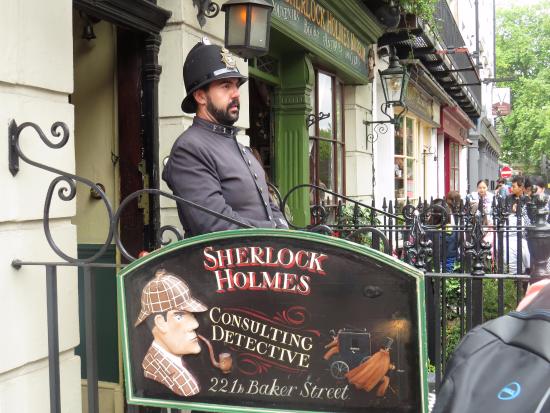
The Georgian mansion that houses the Wallace Collection of art and period furnishings typifies the area's elegant architecture.
In the 18th century the area was known for the raffish entertainments
in Marylebone Gardens, the scene of bear-baiting and prize fights by
members of both sexes, and for the duelling grounds in Marylebone
Fields. The Crown repurchased the northern part of the estate in 1813.
Intimate bookstores, family-owned patisseries, and high-end
boutiques help the neighbourhood of regal, white stone buildings
maintain a cosy village vibe, despite its central London location.
Cricket players outnumber cobblers in this ritzy neighbourhood, and
with its very own green space, (not to mention Hyde Park is just a
neighbourhood away), there's plenty of room for friendly competitions.
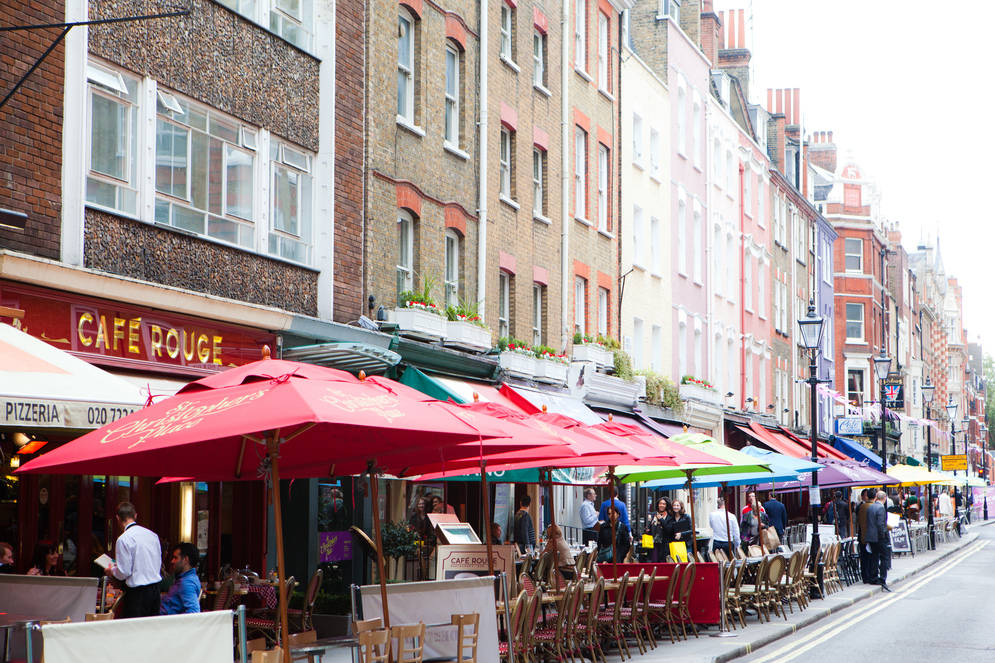
A short walk from The Regent's Park to the east is the home of the most
famous fictional detective in the world - Sherlock Holmes' bachelor
flat at 221B Baker Street - and the popular waxworks at Madame
Tussauds.
The Name
The name originates from the parish church, dedicated to St Mary; the original church was built on the bank of a small stream or "bourne", called the Tybourne or Tyburn. This stream rose further north in (Hampstead), eventually running along what became Marylebone Lane, which preserves its curve within the grid pattern. The original name of the parish was simply Marybourne, the stream of St Mary; the French "le" appeared in the 17th century, under the influence of names like Mary-le-Bow. The suggestion that the name derives from Marie la Bonne, or "Mary the Good", is not substantiated.
![]()
Online Walks

Things to See and Do
Marylebone Cricket Club
Marylebone Cricket Club (MCC) was founded in 1787 and based since 1814 at Lord's Cricket Ground, which it owns, in St John's Wood, London. The club was formerly the governing body of cricket retaining considerable global influence. In 1788, the MCC took responsibility for the laws of cricket, issuing a revised version that year. Changes to these Laws are now determined by the International Cricket Council (ICC), but the copyright is still owned by MCC. When the ICC was established in 1909, it was administered by the secretary of the MCC, and the president of MCC automatically assumed the chairmanship of ICC until 1989.
There have been three Lord's grounds: the original on the Portman Estate and leased until 1810. All three sites lie to the west of Regent's Park. Thomas Lord leased all three grounds, and all three were named after him. Lord was forced to abandon the second ground because of the Regents Canal construction. The third ground was the present Lord's, now home to MCC for over 200 years.
The Beatles in Marylebone
Marylebone has plenty of "Beatles" heritage - the original Apple Corps headquarters was at 95 Wigmore Street.

34 Montagu Square, Marylebone
The ground floor and basement flat at this
address was once leased by Beatles member Ringo Starr during the
mid-1960s. Its location is 2 km from the Abbey Road Studios, where The
Beatles recorded. Many well-known people have lived at the address,
including a British Member of Parliament, Richard-Hanbury Gurney, and
the daughter of the Marquess of Sligo, Lady Emily Charlotte Browne. The
square was named after Elizabeth Montagu, who was highly regarded by
London society in the late 18th century.
Paul McCartney recorded demo songs there, such as "I'm Looking
Through You", and worked on various compositions, including "Eleanor
Rigby". With the help of Ian Sommerville he converted the flat to a
studio for Apple Corps' avant-garde Zapple label, recording William S.
Burroughs for spoken-word Zapple albums. Jimi Hendrix and his manager,
Chas Chandler, later lived there with their girlfriends. Whilst living
there, Hendrix composed "The Wind Cries Mary".

Jimi Hendrix
John Lennon and Yoko Ono also rented the flat, taking a photograph
that would become the cover of their Two Virgins album. They lived
there for five months from July 1968, during which time Lennon was
creatively very active, working on The Beatles' self-titled album -
also known as the White Album - as well as on early collaborations with
Ono. It was at 34 Montagu Square that the famous nude photograph of
John and Yoko was taken for the Two Virgins album cover - one which EMI
refused to distribute.
On 18 October 1968 the flat was raided by
police, who found traces of cannabis there. He was subsequently
convicted for possession of the drug on 28 November, six days after the
White Album was released. It appears that it was while living at number
34 that Lennon began to experiment with heroin, the effects of which he
later documented in ‘Cold Turkey’. The media storm
surrounding Lennon’s conviction forced the couple to move out of
Montagu Square, and by 1971 Lennon and Ono were living in New York.
After the police raided the flat looking for drugs, the landlord of
the property sought an injunction against Starr to prevent it from
being used for anything untoward or illegal. Starr sold the lease in
February 1969. In 2010, Ono unveiled a blue marker plaque at the site,
making it an English Heritage "building of historical interest".
Marylebone Register Office, 97-113 Marylebone Rd Marylebone
Paul McCartney married Linda Eastman at Marylebone Register Office
on 12 March 1969. Although the event was supposed to be a secret, many
onlookers and reporters heard about it and turned up for a glimpse of
the couple. To avoid the crowds the couple entered the register office
via a side door. None of the other Beatles attended the ceremony, but
McCartney's brother Michael and The Beatles' assistant Mal Evans acted
as witnesses.

McCartney married his fourth wife, Nancy Shevell, in an intimate
ceremony at the same location on 10 October 2011. Nancy had been
friends with Paul and Linda for many years. The newlyweds were greeted
on the steps of the building by friends and family who covered them in
rose petals. A day earlier, Nancy, 51, who is Jewish, visited the
Liberal Jewish Synagogue near their home in St John's Wood, to mark Yom
Kippur.
57 Wimpole Street, Marylebone
57 Wimpole Street is where John Lennon and Paul McCartney wrote their first US
number one, 'I Want To Hold Your Hand', and Paul dreamt the tune of the most covered song of all
time - 'Yesterday'. The house was bought by the Asher family in 1957 when they moved
from a flat in Great Portland Street. Dr Richard Asher was an eminent
doctor who specialised in mental health. His wife Margaret was
professor of music at Guildhall School of music. She taught a young man
called George Martin how to play the oboe. They had three children:
Claire and Jane were both actresses and son Peter was a singer (Peter
of Peter and Gordon). Paul dated Jane from 1963 to 1968.
Paul got on very well with the Asher family and jumped at the chance
when the Ashers asked him if he would like to make their family home
his London base. Paul was given a room at the top of house at the back
- it was almost a self contained apartment with its own bathroom. Under
the bed Paul kept his gold records and his MBE! John and Paul wrote
several songs, including "I Want to Hold Your Hand," in the basement
music room of the Asher home. Paul also wrote "Yesterday" here.
In 1966, Paul moved to his own home in St. John's Wood close to Abbey
Road and EMI Studios. The Beatles frequently gathered here before or
after sessions at Abbey Road. John, George and Ringo all moved into
large homes in the distant, wooded "stockbroker belt" suburbs of Surrey
in the mid-sixties, leaving Paul the only true "London Beatle."

Marylebone Rail Station
Marylebone Rail Station, Great Central House, Melcombe Place, London: True fans of the Fab Four will recognise as the setting for the opening scenes of A Hard Day’s Night. If you want to truly walk in the footsteps of John, George and Ringo, head to nearby Boston Place (running along the right side of the Station), the road the three are running down at the beginning of the film.

Marlebone Address Book
Wimpole Street
Wimpole Street is a very quiet street in the centre of the medical
quarter of London, close to Harley Street - most of the houses are
divided into consulting rooms for specialist doctors. It also has
literary connections - Elizabeth Barrett lived at number 50 Wimpole
Street. She married fellow poet Robert Browning at St Marylebone Church
after being kept virtual prisoner in the house for most of her life.
John and Yoko Lennon were big fans of the Brownings. Yoko wrote 'Let Me
Count the Ways' based on a poem by Elizabeth and John wrote Grow Old
With Me, based on a poem by Robert. John apparently saw him and Yoko as
re-incarnations of the Brownings. For Christmas 1980 John bought Yoko
an original handwriting of Elizabeth Barrett with a portrait framed
next to it - he was never able to give them personally to her
though.
The quietness of Wimpole Street was interrupted in 1962 when gun shots
rang out in nearby Wimpole Mews. 17 Wimpole Mews was the home of Dr
Stephen Ward, a society osteopath. Ward had many female friends he
liked to introduce to his high society male friends. For instance, he
introduced Christine Keeler to John Profumo, Minister of War and also
to Major Ivanov of the Russian KGB. Keeler had simultaneous affairs
with these two men – at the height of the cold war.
On 14 December 1962 a spurned lover of Keeler, Johnny Edgecombe,
arrived at Wimpole Mews with a gun and started shooting. The story was
all over the press the next day and finally led to the uncovering of
the ‘Profumo Affair’ which led to the resignation of
Profumo, the ultimate downfall of the Government and the suicide of
Steven Ward. It was alleged by Philip Norman, in his book
‘Shout!’ that the press saw Beatlemania as an antidote to
the revelations around the Profumo affair.

Queen Anne Street is an elegant cross-street which unites the
northern end of Chandos Street with Welbeck Street. The painter JMW
Turner moved to 47 Queen Anne Street in 1812 from 64 Harley Street, now
divided into numbers 22 and 23, and owned the house until his death in
1851. It was known as "Turner's Den", becoming damp, dilapidated,
dusty, dirty, with dozens of Turner's works of art now in the National
Gallery scattered throughout the house, walls covered in tack holes and
a drawing room inhabited by cats with no tails.
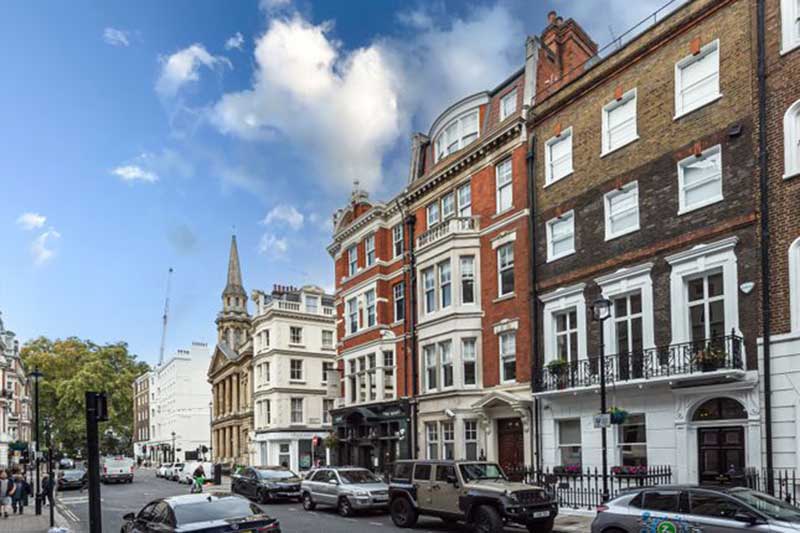
Bentinck Street leaves Welbeck Street and touches the middle of winding
Marylebone Lane. Charles Dickens lived at number 18 with his indebted
father (on whom the character Wilkins Micawber was based) while working
as a court reporter in the 1830s, and Edward Gibbon wrote much of The
Decline and Fall of the Roman Empire while living at number 7 from the
early 1770s.
James Smithson wrote the will that led to the foundation
of the Smithsonian Institution while living at number 9 in 1826, while
number 10 was briefly graced by Chopin in 1848, who found his apartment
too expensive and moved to Mayfair. More recently, Cambridge spies
Anthony Blunt and Guy Burgess lived at 5 Bentinck Street during the
Second World War. In 1960s two-some John Dunbar and TV repairman "Magic
Alex" lived on the street, where the former introduced the latter to
John Lennon in 1967.
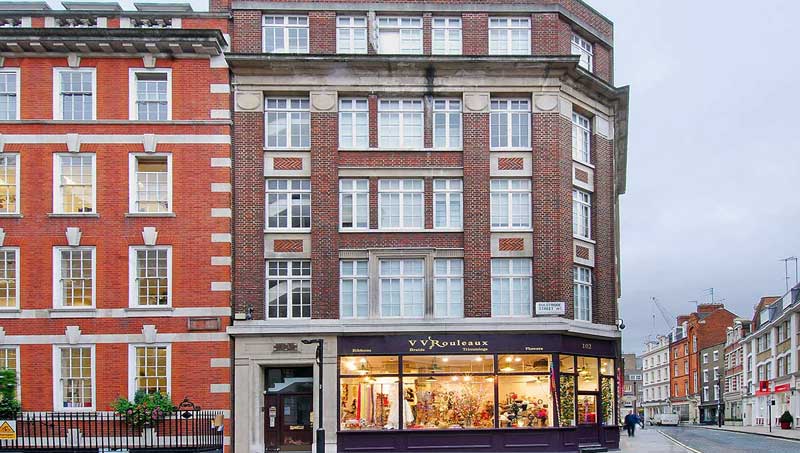
Small and charming, Bulstrode Streetis named after a Portman family
estate in Buckinghamshire, itself named after a local family there
made-good in Tudor days. Tucked away, with a few terraced houses,
Bulstrode Street has been the home of minor health care professionals
for hundreds of years. The RADA student and aspiring actress Vivien
Leigh, aged twenty in 1933, gave birth at the Rahere Nursing Home, then
at number 8, to her first child.
The north end of Welbeck Street joins New Cavendish Street, the name of
which changed from Upper Marylebone Street after World War I. Number 13
in New Cavendish Street, at its junction with Welbeck Street and on the
corner of Marylebone Street, was the birthplace in 1882 of the
orchestral conductor Leopold Stokowski, the son of a Polish cabinet
maker. He sang as a boy in the choir of St Marylebone Church.
At the northern end of Marylebone High Street towards the Marylebone
Road there is an area with a colourful history, which includes the
former Marylebone Gardens, whose entertainments including bare-knuckle
fighting, a cemetery, a workhouse, and the areas frequented by Charles
Wesley, all shut down by the close of the 18th century, where today
there are mansion blocks and upper-end retail.
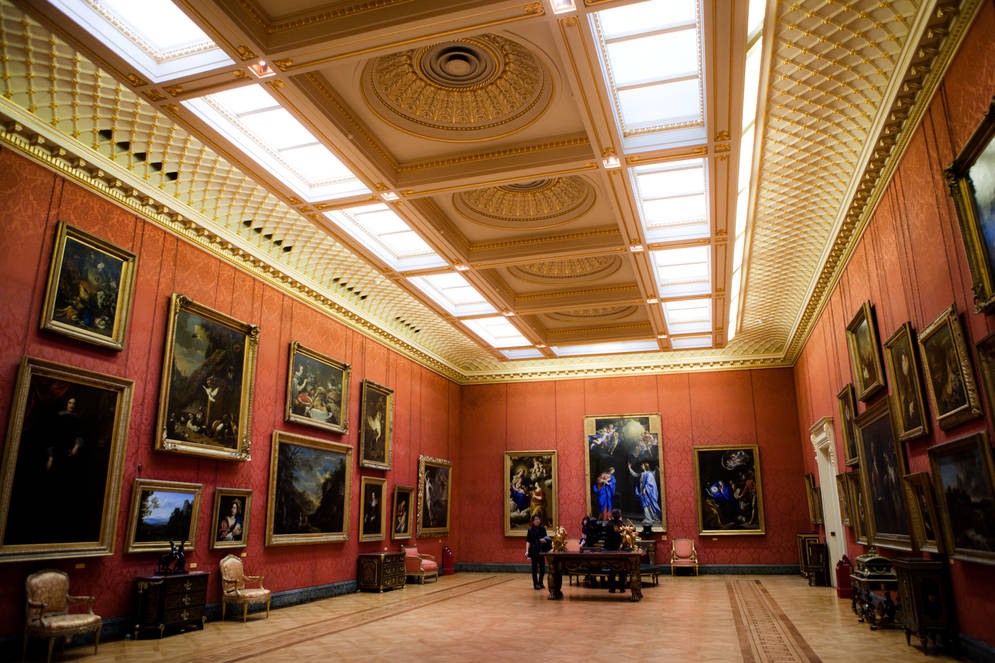
Browse The Wallace Collection, a museum holding that boasts some of
Europe's finest paintings, porcelain, and armour. The Wallace
Collection is housed at Hertford House in Manchester Square, the former
townhouse of the Seymour family, Marquesses of Hertford.
Design by W3layouts

